Mekong River Delta: History, Weather and Best Time to Visit
Mekong River Delta, also known as Cuu Long Delta (Vietnamese: Đồng Bằng Sông Cửu Long – Because of 9 estuaries to terminate the flow of the Mekong River to the ocean), is the southernmost part of Vietnam, located to the southeast of Cambodia, is the most fertile land and has the largest population in Vietnam with about 20 millions people. The Mekong Delta includes 13 cities and provinces: Ho Chi Minh City. Can Tho, An Giang, Dong Thap, Long An, Tien Giang, Vinh Long, Ben Tre, Tra Vinh, Soc Trang, Hau Giang, Bac Lieu, Ca Mau and Kien Giang.

History of the Mekong River Delta:
The Mekong Delta is the cradle of the Oc Eo culture that flourished from the 1st to the 7th Centires AD. This culture is distributed mainly in the low-lying area west of the Hau River, including the provinces of An Giang, Kien Giang, Dong Thap, Can Tho, Bac Lieu... and a part of Southeast Cambodia. Oc Eo society is a society that develops many crafts such as pottery, copper, iron, tin, and goldsmithing. Especially agriculture and commerce at this time was quite developed with a series of evidences such as ancient irrigation works, canals that both irrigate and transport roads, handicraft products, metal coins, jewelry. jewelry, seals made of precious stones, glass... many products of imported origin.
This culture also left many different architectures such as traces of houses on stilts, massive architectures of mixed brick and stone showing a high level of construction techniques. Researchers believe that this culture is the product of an ancient state that existed from the 2nd to 6th centuries in Southeast Asia, which has been recorded many times by Chinese historians, namely the Kingdom of Funan.
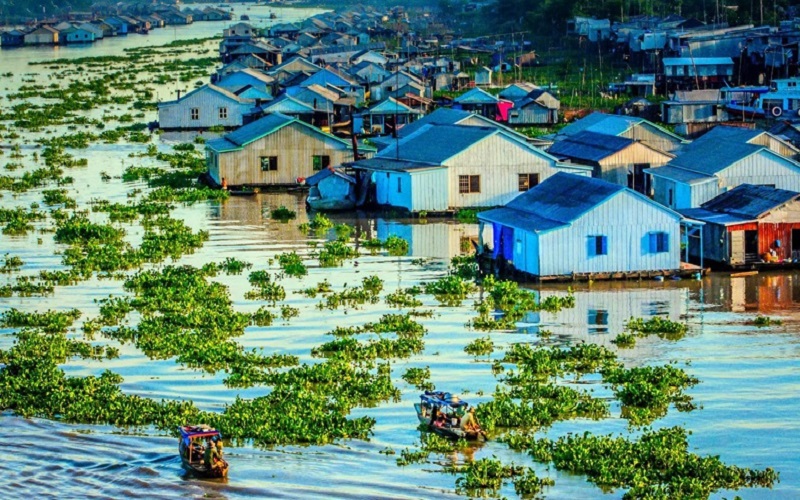
The Mekong Delta was the mash land of Khmer People and has a history of exploration since the 17th century, starting under the Nguyen Lords, the lords organized the initial administrative units on this land, then gradually expanded until about By the middle of the 18th century, control of the whole plain was completed. The administrative division and arrangement have changed many historical periods.
In the past, Southern Vietnam was called the land of Dong Nai. In the spring of the Year of the Tiger (1698), Lord Nguyen sent Nguyen Huu Canh to Cambodia to take the land of Nong Nai and set it up as Gia Dinh Palace. "Land of Nong Nai" or "Phu Gia Dinh" then included the whole South region.
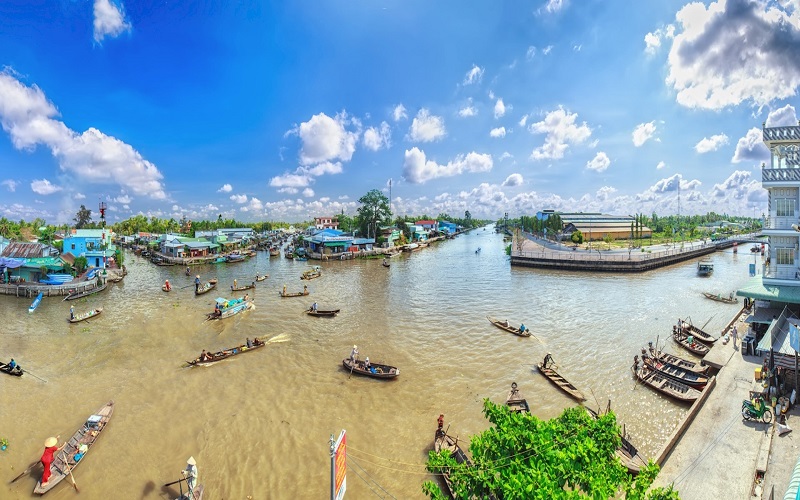
In August of the year of Giap Ngo (1714), Lord Nguyen appointed a Chinese native from Loi Chau, Guangdong province to be the General of Ha Tien town. According to the book Hoang Viet Giap Ty, in the year of the Rat year 1708, Lord Minh Vuong gave Mac Cuu the position of General of Ha Tien.
In the spring of the Year of the Rat (1732), Gia Dinh established it as Dinh Vien and built the Long Ho palace (the custom called Cai Be palace). In the Year of the Rat (1756), Nghi asked Nguyen Cu Trinh to make a promise to the Chan Lap king, Nac Nguyen, to atone for his sins and take the land of two lands, Xoai Rap and Tam Don (probably present-day Go Cong and Dong Thap Muoi). added to Dinh Vien continent.

In 1757, he received from King Chan Lap two lands Tra Vinh and Ba Thac and Tam Phong Long area.[a] Nguyen Cu Trinh submitted to Lord Nguyen to move Long Ho palace to Tam Bao country. He moved from Sa Dec to make Dong Khau religion, from Cu Lao in Tien Giang to become Tan Chau, and from Chau Doc to Hau Giang, he made Chau Doc. Over half a century (1698-1757), the Nguyen lords had finished setting up administrative bases throughout the South.
In October of the Year of the Pig 1779, Nguyen Anh gave a map to divide the boundaries of 3 palaces Tran Bien (Bien Hoa), Phien Tran (Gia Dinh) and Long Ho (Vinh Long, An Giang). Take the land of My Tho and set it as Truong Don palace, for the headquarters of Giong Cai Yen.
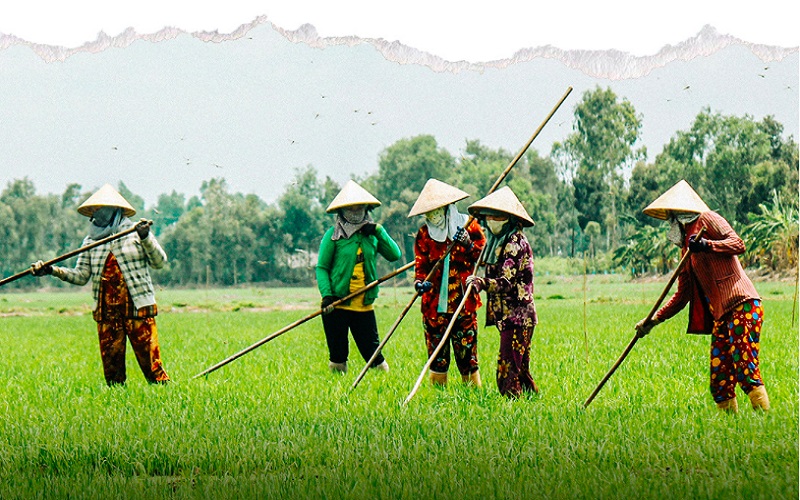
By the end of the 18th century, the whole South was divided into 4 palaces: Tran Bien, Phien Tran, Long Ho, Truong Don and Ha Tien town (equivalent to 5 provincial units today). In the year of Canh Than 1800, Gia Dinh was changed to Gia Dinh town, including Phien Tran palace, Tran Bien palace, Vinh Tran palace (Long Ho), Tran Dinh palace (Truong Don) and Ha Tien town.
On the 12th of January, the year of the Dragon year (1808), Gia Dinh town was changed to Gia Dinh city. Gia Dinh citadel governs 5 towns in the south, namely Phien An (old Phien Tran), Bien Hoa (old Tran Bien), Dinh Tuong (old Tran Dinh), Vinh Thanh (former Vinh Tran) and Ha Tien, and also manage more. Binh Thuan town in the north of Bien Hoa. In which, the whole town of Dinh Tuong, Vinh Thanh, Ha Tien and part of Phien An town belong to the present day Mekong Delta region.
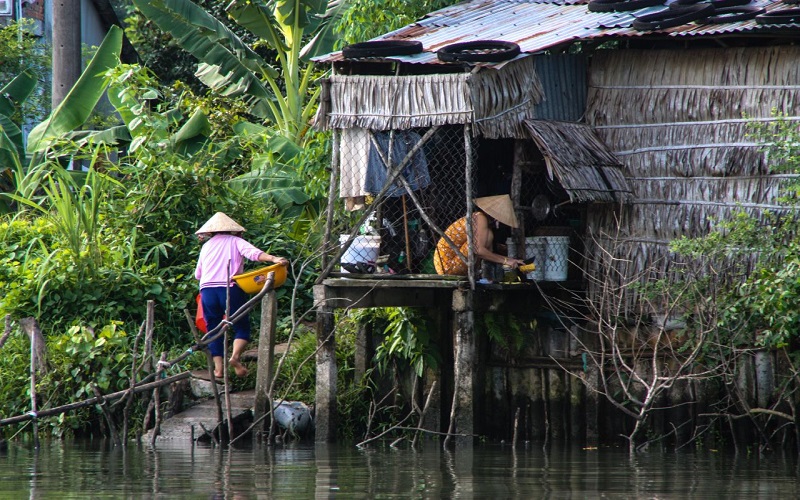
In the 13th year of Minh Mang (1831), the town was changed to a province. The whole country of Dai Nam has 30 provinces and 1 government of Thua Thien. Cochinchina is divided into 6 provinces, so it is called Nam Ky Luc province or Luc province. Those are the provinces: Phien An, in 1836 changed to Gia Dinh (the provincial capital is Saigon), Bien Hoa (the provincial capital). is Bien Hoa province), Dinh Tuong (province capital is My Tho city) in the East; Vinh Long (the provincial capital is Vinh Long province), An Giang (the provincial capital is Chau Doc city) and Ha Tien (the provincial capital is Ha Tien city) in the West.
Among the 6 provinces in Cochinchina at that time, there are 4 provinces in the Mekong Delta region (Southwest region) today, including: Dinh Tuong, Vinh Long, An Giang and Ha Tien. In addition, a part of the land of Gia Dinh province at that time was also located in the Mekong Delta region, equivalent to part of the provinces of Long An and Tien Giang (the land of Go Cong) today. Upstream and downstream of Vam Co Tay River (until the confluence of Bao Dinh River), together with Bao Dinh River is the boundary between Gia Dinh and Dinh Tuong provinces.
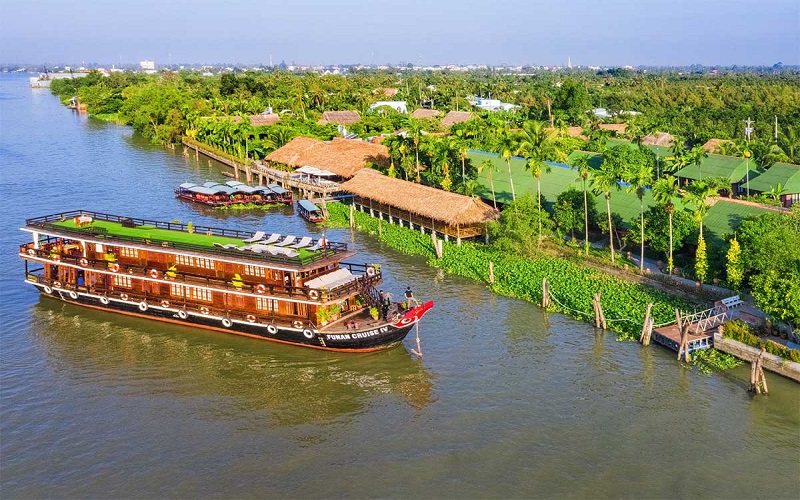
On February 17, 1859, the French invaded Gia Dinh citadel (also known as Saigon citadel). On February 28, 1861, the French colonialists captured Gia Dinh province and on April 12, 1861, finished occupying Dinh Tuong province. However, it was not until December 18, 1861, that the French captured Bien Hoa province (today in the Southeast region).
On June 5, 1862, the Hue court had to sign the Treaty of Nham Tuat ceding to the French 3 provinces in the Southeast region of Cochinchina, namely Bien Hoa, Gia Dinh and Dinh Tuong. In 1867, the French violated the "peace treaty", bringing troops to occupy 3 provinces in the western region of Cochinchina, Vinh Long, An Giang and Ha Tien. After that, the French colonialists abolished the ruling style as well as the division of administrative boundaries of the old district of the Nguyen Dynasty.
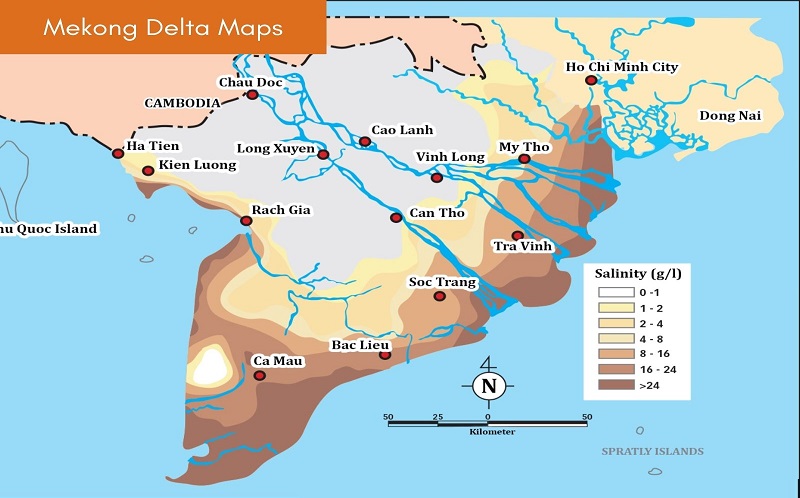
After the August Revolution in 1945, the resistance government of the Viet Minh initially changed the names of some provinces in the Southwest region, mainly named after the national hero against the French in the previous locality. This. During the period 1945 - 1954, the Vietnamese Nationalist government in Cochinchina moved again where the district capitals of some districts were located and renamed these districts after the place where the new district capital was located. added some new districts.
From 1954 – 1975, Mekong Delta area was under control of South Vietnam Gorvernment (Republic of Vietnam) and region was devided into different provinces with new names. However, the authorities of the National Front for the Liberation of South Vietnam (later the Provisional Revolutionary Government of the Republic of South Vietnam) and the Democratic Republic of Vietnam did not recognize the names of the new provinces. Instead they still used the old province names before, this was also the battle field until the Vietnam War finished in 1975.
Population of Mekong River Delta, Vietnam:
Residents in the Mekong Delta are now mainly Vietnamese, indigenous Khmer people living mainly in Tra Vinh province, Soc Trang province and An Giang province. There are still Chinese of equal size in Kien Giang and Tra Vinh provinces, some migrating to the late Ming and early Qing periods recruited by Mac Cuu.
Weather and Climate in Mekong Delta Vietnam:
The Weather and Climate in Mekong Delta is affected by both the southwest and northeast monsoons. Mekong Delta temperature is hot all year round with the temperatures fluctuating between 25 and 28°C. There are a few days of the year that the temperature in the delta falls below 20°C .
In general, there are two main seasons in the Mekong Delta: the dry season and the rainy season. Wet season floods and dry season saline intrusion are two of the main hydrologic problems of the Delta. These also affected to travel experiences of tourists. Below we go into details to see what pros and cons of visiting Mekong Delta in each season.
- Dry Season (from November to April):
The dry season in Mekong Delta lasts from November to April, with February to May time being a little bit hotter and more humid, with less, even nearly no rain. Dry season is considered as the preferred travel time.
During this time, the flow in the Mekong River is insufficient to prevent saline intrusion and extensive salinization of waterways happens in the lower Delta. The entire Ca Mau peninsula in the southwest area of the Delta is salinized for about 6 months during dry months because there is insufficient freshwater flow in the river to displace saline intrusion from the southwestern area of the Delta.
- Rainy Season (from May to early November):
The wet or rainy season is from May to early November, with July and August having the highest rainfall level of the whole year. The rain comes in short but heavy showers, happens mostly in the afternoon and just lasts for one hour or so.
It is said that the climatic factors of the area are very suitable for developing almost all types of agriculture. The weather is great for intensification and cultivation. Even during the wet season from May to early November, Mekong Delta can be visited too.
Historical Monthly Average Climate & Weather Conditions in Mekong Delta.
| Months | High / Low (°C) | Rain |
|
January |
33°/ 18° |
0 days |
|
February |
34°/ 18° |
1 days |
|
March |
36°/ 24° |
8 days |
|
April |
35°/ 24° |
14 days |
|
May |
35°/ 26° |
27 days |
|
June |
34°/ 25° |
13 days |
|
July |
32°/ 24° |
22 days |
|
August |
30°/ 23° |
24 days |
|
September |
30°/ 22° |
20 days |
|
October |
32°/ 22° |
10 days |
|
November |
31°/ 20° |
2 days |
|
December |
31°/ 17° |
0 days |
Best Time to visit Mekong Delta of Vietnam:
The best time to Travel to Mekong Delta for good weather is the months between September and November. It is the floating season in the Mekong Delta when the water from upstream of the Mekong River flows into the two upstream rivers of Dong Thap and An Giang provinces, creating a flood. The weather is comfortable, and the rainfall is low. Visiting the Delta this time, you do not have to worry about the rain as it rarely happens, tourists can take part in many interesting outdoor activities such as biking to the countryside, visiting local people, joining cooking classes, go fishing…
Besides the flooding season, summertime is also a great time to visit this region. June, July, and August are in fruit season, when you can have chance to enjoy more kinds of tropical fruits growing here. Visiting the fruit garden this time, you can enjoy the best fruits such as durian, pomelo, mango, tangerine, and grapefruit.
See Also: Mekong River Delta - Best Things to Do and Places to Visit

![]()
![]()
![]()
![]()
![]()
Best of Vietnam
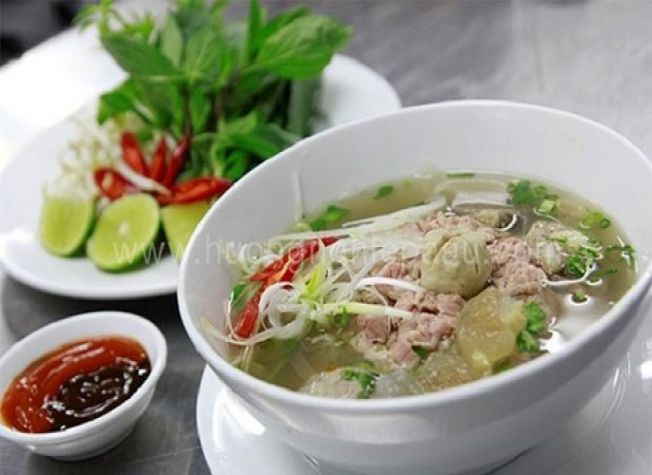
Best Vietnamese Food You Have to Try in Vietnam
Best Food in Vietnam: Vietnamese Traditional Food is top World well known to be both healthy and...

10 Best National Parks in Vietnam
Vietnam Travel Guide: If you look for the Best Wildlife Discovery Experience in Vietnam, here are...
Read More
Best Souvenir to Buy in Vietnam
If you look for Best Things to Buy when traveling to Vietnam to bring home for your family & friends...
Read More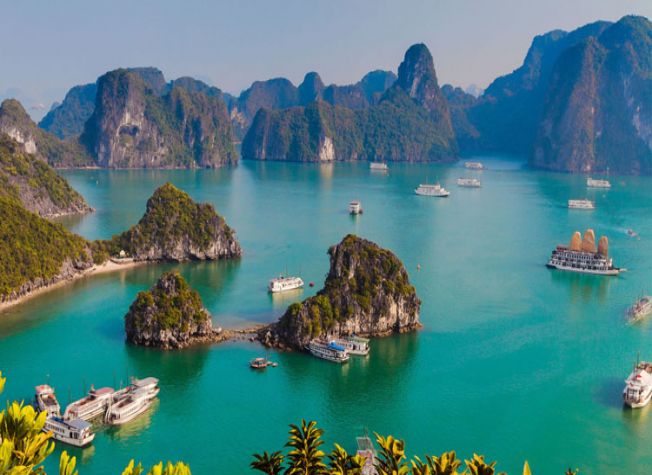
The 10 Best Places to Visit in Vietnam
Vietnam Travel Guide: Home to an extensive collection of historical and cultural attractions,...
Read More
Top 10 Museums You Should Not Miss in Vietnam
Vietnam, 4.000 years old country has a unique and lengthy history, culture with 54 ethnic groups. It...
Read MoreFind your trip
Vietnam Best Tours
Vietnam Car Rental
Vietnam Travel Blog
- Vietnamese People: Origin, History, Culture and Traditions
- Vietnam Currency: Best ATM and Places to Exchange Money
- Vietnam Map: Regions, Cities & Provinces Map of Vietnam
- What is illegal Things in Vietnam: Rules & Laws for Tourists
- Best Time to Travel to Vietnam to Avoid the Bad Weather
- Vietnam News: Population & Religions of 54 Ethnic Groups









